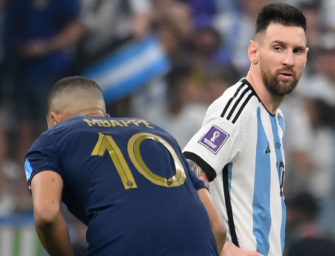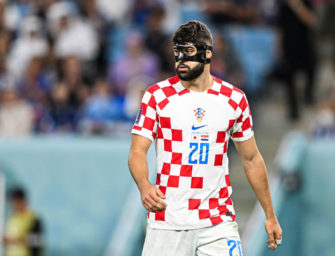A look at TFC's foes: Who are Club Atletico Independiente de la Chorrera?
Toronto FC encountered some of the most prestigious names in Mexican soccer en route to the CONCACAF Champions League final in 2018.
Greg Vanney’s ranks saw off Tigres and Club America in the quarterfinals and semifinals, respectively, before they were edged on penalties by Chivas de Guadalajara in the two-legged showpiece. TFC couldn’t be accused of sneaking into the final via the backdoor.
It hasn’t begun in a similar vein this time around, with the Ontarians being paired with little-known Panamanian side, Club Atletico Independiente de la Chorrera, in the round of 16. To learn more, theScore picked the brain of Gary Stempel, the interim manager of Panama, full-time head coach of the country’s Under-17 setup, and an all-around godfather of Panamanian soccer.
How do we refer to them? Independiente or C.A.I.?
Gary Stempel: They are Club Atletico Independiente, but they’re known here in Panama as “CAI” – basically the three letters put together.
When Toronto FC drew Club Atletico Independiente, you told me they’re “progressive.” What did you mean by that?
GS: They were a small second-division team in La Chorrera, Panama Oeste, and traditionally the big team in this area is San Francisco, the team that I coached for many years. Then (CAI) got promoted to the first division and were taken over by a consortium of Colombian businessman. They changed the whole structure of the club.
Súper Final de la Star Cup, @AcademiaCAIpty empató 2-2 ante J.A.P.S en la ida de la final sub10 #SomosCAI?? pic.twitter.com/KQoB8RXnV7
— C. A. I. (@CAIPanama) February 3, 2019
They are the first and only Panamanian team at the moment where they have their own training field which belongs to them, on their land, and they built dormitories and a little school. They’ve basically set up their own training facilities, which, here in Panama, no one’s ever done that before. They’re a bit more professional, they’ve got a whole youth structure, and they’re making it bigger.
Two seasons ago, they won the league. They’re probably one of the most progressive clubs in Panama.
This must be of great benefit to the whole national team program.
GS: It’s been 20 years since I came to Panama and the difference I’ve noticed is, especially coming back to work with the national teams now, that the development and the actual training of young players is much, much better. Far more professional. More time is actually spent on coaching the youth players.
We’ve got three players from CAI in the Under-17s. They live in the club’s sports complex. They’re not from Panama City, they’re from the interior, and now there’s a club that’s able to put up these players. That makes it much easier for us because it was always very difficult to get players who lived six, seven, eight hours away.
One of my Under-17 players comes from a place called Darien. It borders Colombia, and the FARC (guerrilla movement named the Revolutionary Armed Forces of Colombia) used to go into this area of Panama to try and smuggle over the drugs. It’s a very tough area. This player has come out of this place and he’s 16 years old. He’s already been called up to CAI’s first team.

In addition to their strong philosophy of producing young players, do CAI have a distinct playing style? How is their reputation in the Panamanian game?
GS: They’re well-known for their attractive football. They’re looking to promote young players into the senior side.
They’ve still got to go a fair way (to be regarded as one of the big guns). In any part of the world, football is measured by trophies. They’re seen as one of the up-and-coming teams; they have one estrella – the one star, the one championship – while the big clubs like El Tauro and Arabe Unido have 13 or 14 stars. San Francisco’s got nine. Before they’re seen as a big club, they’ll have to win a few more championships.
The Toronto FC match and to be in the CONCACAF Champions League is a big deal for them.
Are you able to highlight a couple of players?
GS: The kid (from Darien) I talked about is Eric Pinto. Their captain is Manuel Torres, and he played for me in San Francisco and has been a national team player. He’s probably the oldest player in the league but has won more titles than anyone else – 13 or 14, I think. There’s another player called Omar Browne who’s played a couple of games with the national team, including against the United States not so long ago.
They’re probably the standout players. The rest are fairly young.

Do CAI have a chance against Toronto FC?
GS: Toronto are pretty strong – most MLS teams are pretty strong and making incredible signings. The league has picked up tremendously in the past two or three years. So, I think it will be very, very difficult for CAI. I’d love to see it but, if you ask me from a football point of view, I just can’t see it.
Has MLS earned more respect in Panama recently?
GS: I think so. It’s helped that we’ve had a few players there like Anibal Godoy and Harold Cummings at the San Jose Earthquakes, we had Adolfo Machado in Houston, Michael Amir Murillo was nearly voted Best Latin Player and is with the New York Red Bulls. We’ve also got youngsters with the LA Galaxy and Atlanta United.
MLS is very much looking into Panama now. It makes a lot of economic sense. I’m sure there will be a lot of scouts in Toronto.
This interview has been edited and condensed.






Latest Comments